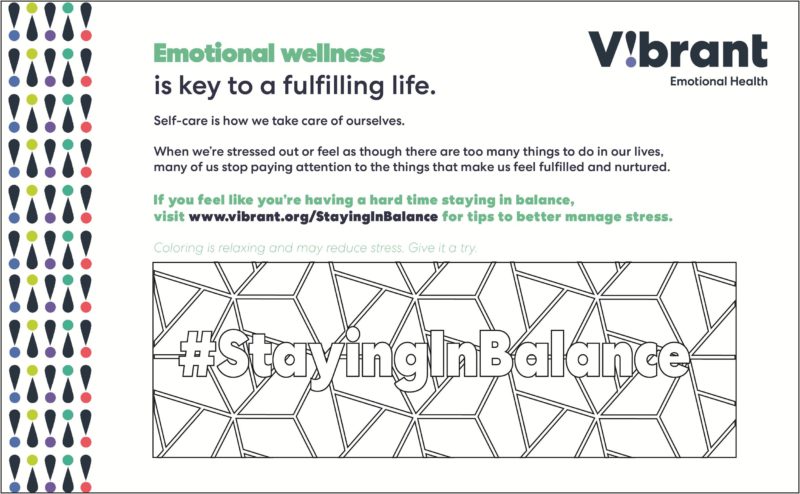Lucy is a 62-year-old woman who has lived in supportive housing for over a decade. She has been treated for bipolar I disorder and has a history of suicidality. Like many older adults with mental health challenges, Lucy has several chronic health problems which are monitored by her primary care physician, including atrial fibrillation, hyperlipidemia, and Type II diabetes. Recently, Lucy fell in the community room of her residence and was treated in the emergency room. Doctors put her right leg in a hard cast after it was found that hardware pins from a previous surgery had shifted. Lucy was told to not bear any weight on her leg for at least three months, since it could lead to an infection and possible amputation. She was given a wheelchair and sent back to her home. Lucy’s Medicaid is inactive, so she does not currently qualify for home health care. She lives on the fourth floor walk-up in a building without a wheelchair accessible entrance. Not only is Lucy unable to get the assistance she needs to live safely and independently – her home has also effectively become a prison, since the lack of accessibility forces her to be homebound. In Lucy’s current state, she is at risk for nursing home placement because her current needs cannot be met in supportive housing.

Lisa Furst, LMSW, MPH

Rebecca Heller, LCSW
The social determinants of health and mental health are commonly recognized as important factors of client care, particularly for those living with behavioral health challenges, with housing ranking among the most critical. New York State has one of the most robust supportive housing systems for people living with serious mental illness in the country, with over 50,000 units (https://shnny.org/supportive-housing/what-is-supportive-housing/history-of-supportive-housing). But even our relatively healthily endowed housing system does not effectively serve older adults with mental health needs, despite the fact that people with serious mental illness are living longer lives than ever before. In the last decade, the number of older adults in New York State increased by 26% (https://nycfuture.org/research/new-yorks-older-adult-population-is-booming-statewide and is expected to continue to grow as the baby boom generation ages – meaning that there will be more older adults living with serious mental illness who will need supportive housing.
What makes the current supportive housing system so challenging for older adults? And what has to be done to make housing “age friendly” for older adults living with behavioral health challenges?
As Lucy’s story illustrates, accessibility is a paramount issue for older adults in supportive housing. Typically, doorways are not wide enough to accommodate wheelchairs or other assistive devices, while the buildings themselves are often walk-ups, or at the very least have stairs at the entrance, without ramps. If apartments are of older housing stock, they are more likely to have infestations, leaks, and poor lighting – all of which contribute to health risks. In addition, older apartments often lack adequate storage space that can accommodate specialized equipment or supplies, which increases the likelihood of clutter in the apartment. All of these issues increase the likelihood of falls, which are one of the leading causes of morbidity, premature mortality, and transfers to higher levels of care for older adults.
The environments in which supportive housing may be located can also contribute to challenges for older adults. Apartments are often more affordable in more distant areas, which may lack easy access to public transportation – which itself may not be accessible for older adults with sensory or mobility impairments. If neighborhoods in which supportive housing units are located have a high incidence of community violence, are poorly lit, or without well maintained sidewalks, residents will be less comfortable and less able to safely navigate in and out of their homes as they grow older. Additionally, if supportive housing units are located in areas with increased gentrification, such as in many neighborhoods in New York City and other locations, older adults may find it progressively more difficult to buy basic necessities or feel connected to the community.
But supporting older adults living with mental health needs to age in place in the community goes well beyond ensuring physical safety and accessibility. Successful aging in place requires effective coordination between housing, mental health, medical and home health providers to ensure that chronic and emerging needs are met. It also requires the ability to bring in additional services, such as occupational therapy and in-home nursing that younger populations living in supportive housing might not yet need. If older adults living in standard supportive housing develop an unforeseen medical condition, or acquire a disability resulting from a fall, they may end up prematurely transferring to a higher level of care, which not only costs the service system more, but also takes a tremendous emotional toll on the older adult resident.
To meet the needs of older adults with behavioral health challenges in supportive housing, we need to:
- Ensure individualized in-home support to navigate systems, including securing benefits and entitlements, homecare enrollment, manage transportation and connection to medical and other necessary appointments;
- Fund thereto-fitting of housing units to promote accessibility and more units reserved for and made available to older adults;
- Engagement with social and day treatment programs focused on serving older adults with psychiatric disabilities;
- Ensure payment mechanisms for interventions such as occupational therapy, in-home nursing and in-home behavioral health treatment;
- Advocate during hospital admissions for short term rehab services, appropriate discharge referrals, and care in the least restrictive settings to promote independence, dignity, and aging in place.
Are you wondering what happened to Lucy? The good news is that Lucy is being served by The Bridge, one of the few supportive housing providers whose portfolio includes an Aging Services program, which provides occupational therapy, nursing, social work, case management services and peer support. This program provides ongoing support to Lucy which would otherwise have been impossible, as she didn’t qualify for any outside services beyond what The Bridge offers. The occupational therapist ensured Lucy’s home had no clear fall risks and provided support to manage her activities of daily living, while helping Lucy remain engaged with stimulating activities that kept her off of her affected leg. The nurse provided medical and medication support to manage Lucy’s pressure ulcers and diabetes.
As Lucy struggled emotionally after her fall and subsequent upheaval, she received individual in-home supportive counseling to cope with the transition, while her case manager delved into benefits and entitlements applications to advocate for Lucy to qualify for, and obtain, homecare. Fortunately, The Bridge was able to locate a vacancy and move Lucy temporarily to an accessible unit until the appropriate paperwork could be completed to facilitate a permanent move into a unit with an accessible entrance and elevator on a lower floor.
Without The Bridge’s varied housing options and individualized support through the Aging Services program, Lucy would have been at risk for severe medical repercussions, such as an amputation, and an unnecessary transition to a higher level of care due to a lack of housing accessibility. Now, Lucy can maintain her independence and continue to age in place in a lower level of care, while saving taxpayer dollars.
Unfortunately, Lucy’s ability to remain housed in the community after a fall and subsequent temporary disability is the exception, rather than the rule. There are thousands of Lucys currently living in supportive housing who are one fall or medical complication away from losing their homes in the community. We must do better – we owe it to taxpayers who subsidize more expensive higher levels of care to which older adults are prematurely moved, we owe it to our communities who benefit from diversity and inclusion, and we owe it to older New Yorkers who deserve to age in place with dignity and independence.
Rebecca Heller, LCSW is Director of Aging Services at The Bridge, Inc., and Lisa Furst, LMSW, MPH, is Director of the Geriatric Mental Health Alliance of New York and Assistant Vice President at Vibrant Emotional Health.





